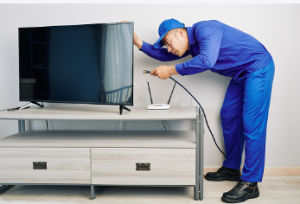A few important factors determine whether an indoor or outdoor antenna will receive the best reception. First, an indoor antenna will receive fewer channels due to local obstacles like walls and metal roofs. Outdoor antennas will receive less interference from these obstacles, but they must still have a clear line of sight to transmission towers. Read on to learn more. Ultimately, your TV antenna will determine how many channels you can receive. Hopefully, you will have a clear line of sight to the transmission towers!
Attic
 If you’ve been thinking of adding a television antenna to your attic, you should know a few things. First, antennas take up a lot of space. You will need to install them with a J-mount, which you can buy for around $20 online. Depending on the antenna you’re installing, you may also need a directional antenna. Make sure the direction of the broadcast towers matches the antenna’s position. Learn more about TV antenna installation.
If you’ve been thinking of adding a television antenna to your attic, you should know a few things. First, antennas take up a lot of space. You will need to install them with a J-mount, which you can buy for around $20 online. Depending on the antenna you’re installing, you may also need a directional antenna. Make sure the direction of the broadcast towers matches the antenna’s position. Learn more about TV antenna installation.
Aside from the roof and attic, you’ll also need to consider the materials between the antenna and the TV transmitter. Ideally, the attic will be surrounded by common roofing materials like wood. Avoid using metal siding, foil-faced insulation, radiant barriers, brick or masonry, and tile roofing. Those materials will hinder the performance of your antenna. Instead, choosing materials like asphalt shingles, plastic roofing, or wood will improve the performance of your antenna.
Roof
Before you install a roof TV antenna, you must read the instructions carefully. You should also secure the coaxial cable and the transformer, if necessary. Some antennas include a built-in transformer, so you may only need to secure the coaxial cable to the mast. Also, place the antenna 10 feet above the roof’s peak. A volunteer can string the cable to steady it while you tighten the u-bolts.
Experience is essential when it comes to antenna installation. A professional installer will know how to properly install the antenna, drill into the walls and cut roof tiles. They will also be able to install roof flashing and seal entry points for wiring. You can reduce the risk of future complications by hiring a professional to install your roof TV antenna. Also, remember that improper installation could cause damage to your home, including a leaky roof or loose mounting.
Wall
Before you install your TV antenna on the wall, you should know how to mount it correctly. There are a few basic steps to follow. First, you should drill holes in the wall for the antenna pole. Once the pole is securely attached to the wall, you must attach the coaxial cable to the splitter. Leave space between the pole and the wall plate to prevent signal leakage. The antenna installation process will vary depending on the size and shape of the antenna. Most antennas come in one solid piece, but some will need assembly. Learn more about TV antenna installation.
If you choose to install your antenna on the wall, you should also know that some walls are not strong enough to support considerable weight. While many walls are made of high-quality materials, they might not be strong enough to support a large weight, such as a TV antenna. You also must ensure that the wall has solid studs or beams, which will help the antenna support its weight. Finally, after installing the TV antenna, you should test it to see if it works.
Motorised
A motorised TV antenna is a great way to get your favourite TV shows without getting up from the couch! They can be positioned anywhere in your home, from the living room to the backyard, and feature a rotatable arm that can rotate to the optimal position to receive the best reception. Its size improves reception and picture quality while maintaining a sleek, modern profile. Motorised TV antennas are compatible with UHF, VHF, and FM signals.
Rotor
To install a TV antenna rotor, follow these simple instructions. First, synchronise the control unit with the antenna’s drive unit. Most rotators have a synchronised knob for adjusting the direction of rotation. You can use the remote to operate the system. Then, mount the antenna’s drive unit on the support mast. Remember that some rotators have specific orientation requirements. For example, if you’re using a Channel Master rotor, install it facing due north. When positioned correctly, the control unit should display a zero-degree reading.